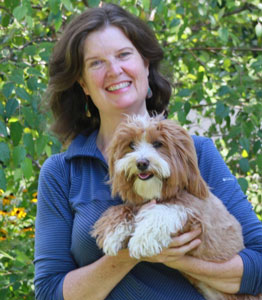
by Sarah Wilson, MA
With dogs and overheating, their tongue tells the tale. Once you know what you’re seeing, you can keep them safer. Here are the four signs of overheating:
Mouth wide open.
Your dog’s mouth and tongue are their AC system. The wider the mouth is open while panting, the more cool air they are trying to run over the tongue. My rule: the wider the mouth, the hotter the dog.
“Baloney” tongue.
As your dog heats up, the surface area of their tongue increases by widening it and thinning it out which makes it more rounded and “floppy”.
Long tongue.
For that same reason, the tongue gets longer. Does the tongue in this picture even look like it fits into that dog’s mouth? The longer the tongue, the more cooling surface the body is trying to create.
Darker color.
Because there is more blood flow as the body struggles to cool the dog off, the tongue darkens.
Additionally, you will notice really rapid panting (AC is turned on high and struggling) and maybe the curling of the tongue (another bid to get more air over more surface area).
Other thoughts:
- Dogs are terrible judges of their own safety. Every year, some ball-crazed dog runs themselves into a veterinary ER visit. We must keep them safe from themselves. On hot days, Daisy and I are out early.
- When walking, if your dog pulls toward the shade, starts lifting one paw then another, or suddenly begs to be picked up, the sidewalk may be too hot for their paws. Especially true for puppies. My personal rule: if walking barefoot would hurt me, it’s too hot for Daisy to be on for long.
- Big-bodied dogs have a harder time staying cool. Whether your dog is chunky by design, like a Pug or a Rottweiler, or because of well-developed begging skills, watch them even more carefully. Such dogs have the equivalent of a small window-unit AC for a large house.
- Short-nosed dogs, like French Bulldogs or Bullmastiffs, have a broken AC unit that always struggles. Such breeds must be protected from the heat by short walks and then kept entertained with indoor games and toys in the summer months.
In closing, please speak to your dog’s veterinarian about summer safety guidelines for your companion. They are the best source for personalized guidance on this important St. Louis dog safety issue.


